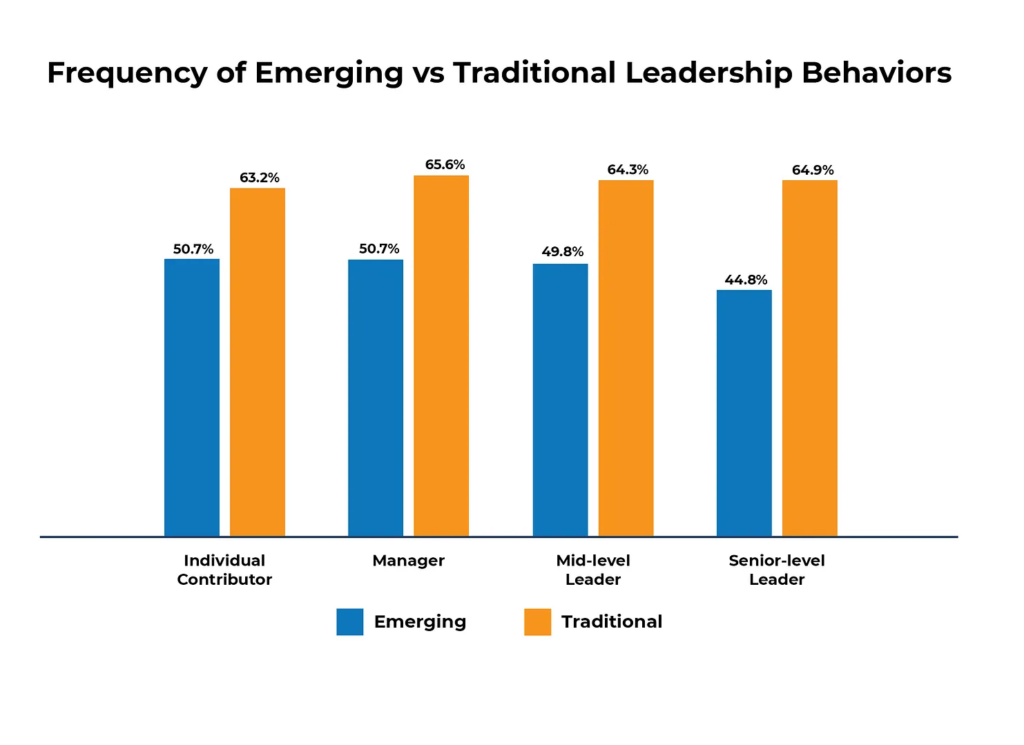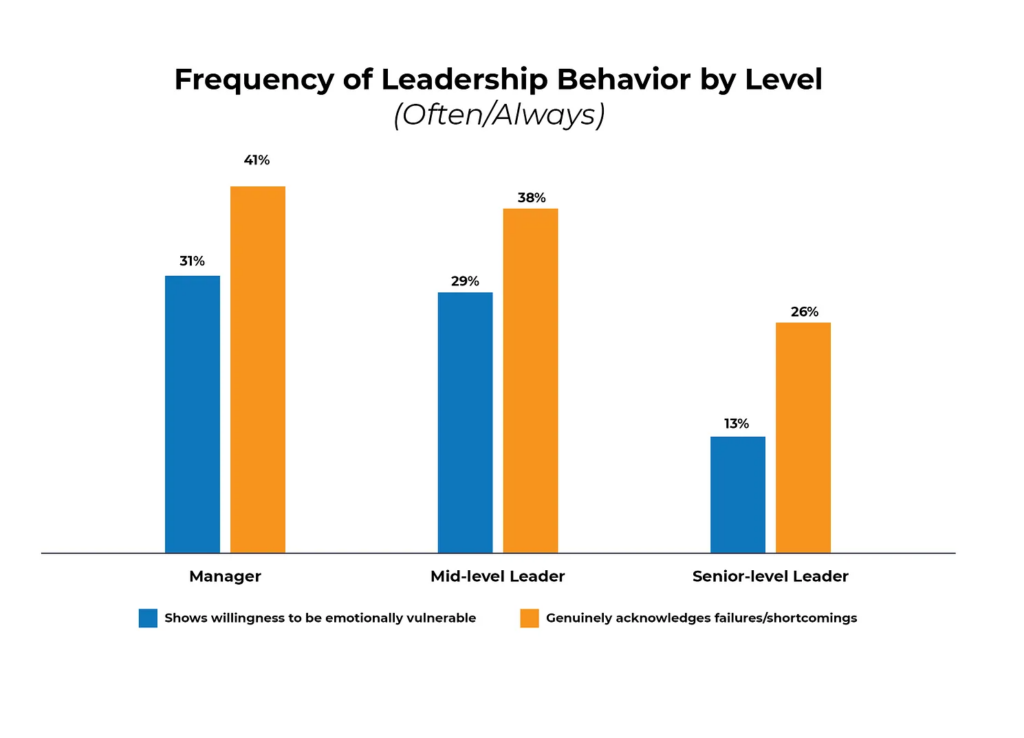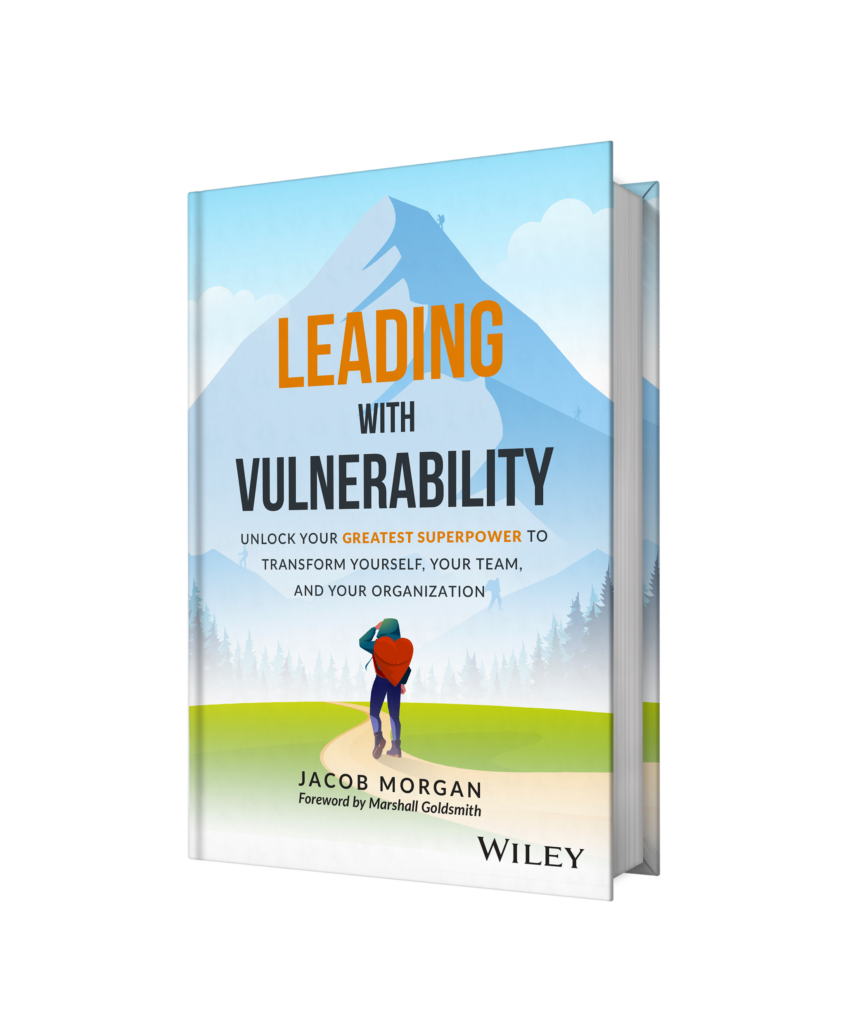If you’re a Chief Human Resources or Chief People Officer, then you can request to join a brand new community I put together called Future Of Work Leaders which focuses on the future of work and employee experience. Join leaders from Tractor Supply, Johnson & Johnson, Lego, Dow, Northrop Grumman and many others. We come together virtually each month and once a year in-person to tackle big themes that go beyond traditional HR.
Does vulnerability have a place at work? If so, then what’s the best way to tap into vulnerability in a work setting? That’s what I aim to uncover in my new book, Leading With Vulnerability.
A part of answering that question is understanding what makes a great leader.
I teamed up with leadership firm DDI. They run an annual global leadership forecast that I was able to tap into, specifically for my leadership and vulnerability research which was featured extensively in my new book.
They have been running an annual study for several years now and have a very good grasp on what makes a great leader. There are 13 behaviors that effective leaders practice.
Everyone has an opinion on what makes a great leader, but what does the actual research and data show? We surveyed almost 14,000 employees around the world representing more than 1,500 organizations, 50 countries, and 24 major industry sectors
Below, we’ll look at what those 13 behaviors are and I’ll provide a comparison of how these behaviors break down across seniority levels. When I first looked at the data, I was completely shocked by what I saw…
Let’s start off by looking at what these 13 behaviors are which you can see in the chart below.

The first thing I noticed when I was looking at these behaviors was that some of them are more “traditional” aspects of leadership and some are more “emerging” aspects of leadership. Traditional leadership behaviors are the classic and timeless behaviors that we have always ascribed to leaders and emerging leadership behaviors are the new behaviors leaders must embrace to lead effectively today and in the future.
Traditional:
-
Recognizes the success of team members
-
Gives critical feedback needed to make improvements
-
Gives positive feedback and encouragement
-
Provides opportunities for team members’ growth and development
-
Maintains high trust and confidentiality
-
Shares his/her thoughts and rationale for decisions
-
Provides opportunities for team members to gain visibility
Emerging:
-
Encourages others to challenge old ways of doing things
-
Openly shares about his/her experiences outside of work
-
Inquires and cares about my wellbeing
-
Listens and responds with empathy
-
Shows a willingness to be vulnerable
-
Genuinely acknowledges his/her failures and shortcomings
Next, I wanted to take a look at how these different types of behaviors are being practices across seniority levels. That’s the breakdown you can see in the below chart.

It’s not a coincidence that across the board leaders practice traditional behaviors far more often than the emerging ones which include vulnerability and more of the “human” behaviors. In the chart above you can see that after “manager” the more senior you become the less likely you are to practice emerging leadership behaviors. Not only that but the gap between traditional and emerging behaviors grows substantially, especially when someone becomes a senior-level leader.
…
Leadership is evolving rapidly—are you keeping up? Each year, I engage with and analyze the insights of leading executives from companies like Microsoft, IBM, and Virgin Group, uncovering the strategies that drive their success. This exclusive PDF distills the top five leadership hacks used by these world-renowned leaders. Discover what sets these leaders apart and how you can apply their breakthrough tactics to elevate your leadership in 2024 and beyond.
…
Looking at the data it’s clear that inside of organizations around the world we prioritize the traditional leadership behaviors while we under appreciate the value and the impact that the emerging “human” behaviors can have.
Since I’m writing a book about leading with vulnerability, I was most interested in those behaviors from the list, specifically “shows a willingness to be emotionally vulnerable” and “genuinely acknowledges failures/shortcoming.” That’s when the really shocking insights appeared.

It’s very clear that the more senior you become inside of an organization the less likely you are to show a willingness to be emotionally vulnerable and the less likely you are to genuinely acknowledge your failure and shortcomings. Not only do we see an overall trend but we also see a precipitous drop from mid-level to senior level leadership. Senior leaders scored lowest in showing a willingness to be vulnerable (13%), genuinely acknowledging failure or shortcomings (26%), and inquiring and caring about the well-being of others (39%).
I explore much more in my book which you can order here. In the meantime, leave a comment and let me know what you think of the findings, do they reflect what you see inside of your own organization?
I’ll also leave you with a quote from one of the CEOs featured in my book about the relationship between vulnerability and competence.
Larry Gies is the CEO and founder of Madison Industries, one of the largest and most successful privately held companies in the world.
Here’s what he shared with me during our interview.
“Teams don’t care what you think until they know that you care. You can be the most competent but it will be meaningless to the teams if they don’t think you have their back. You can’t have their back if you are not vulnerable about the fact that you don’t have all the answers and you are not going to risk what you are building together because of your ego. On the other hand, if you are not competent, the team will lose their trust in you and you will not have the ability to be vulnerable.”
…
Leadership is evolving rapidly—are you keeping up? Each year, I engage with and analyze the insights of leading executives from companies like Microsoft, IBM, and Virgin Group, uncovering the strategies that drive their success. This exclusive PDF distills the top five leadership hacks used by these world-renowned leaders. Discover what sets these leaders apart and how you can apply their breakthrough tactics to elevate your leadership in 2024 and beyond.



